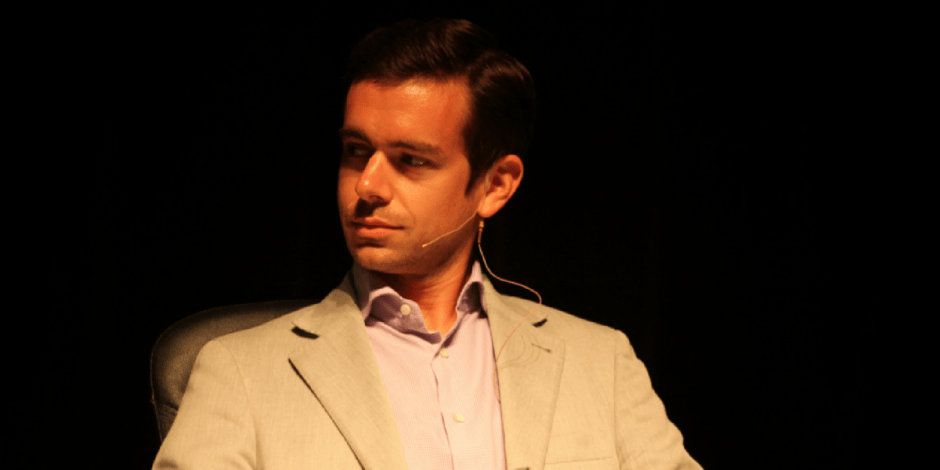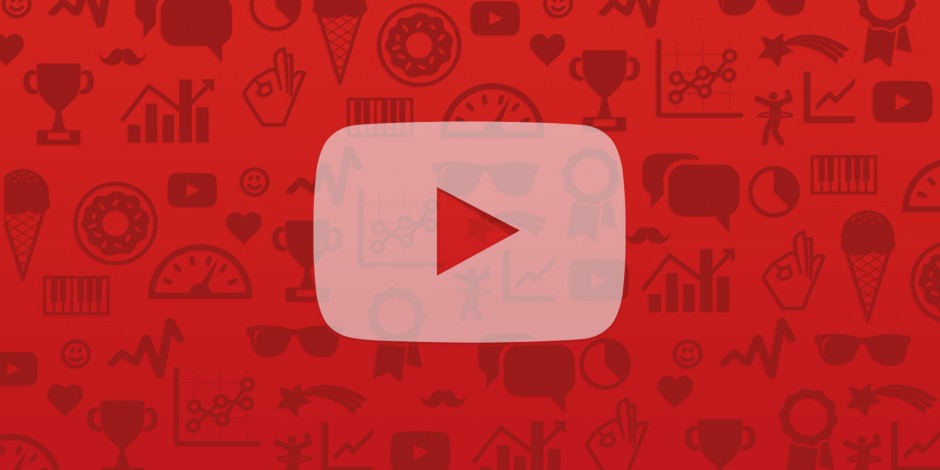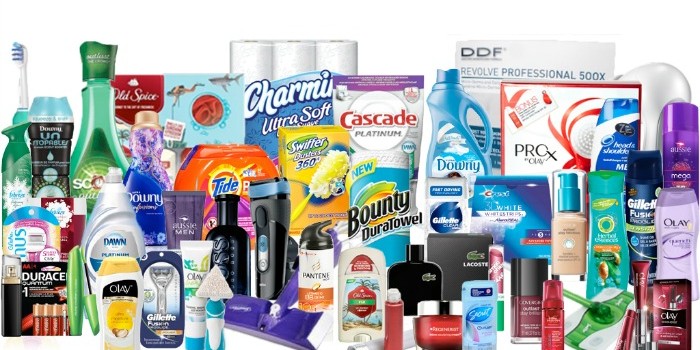Editor’s note: this is a transcript of a keynote speech that The Drum Promotion Fix columnist Samuel Scott delivered today at 3XE Digital in Dublin, Ireland. This post is a substitution for his next regular column, otherwise scheduled to be published this coming Monday, while Scott is now on vacation. His next column will appear on Monday, June 5.
Thank you for the introduction. This is my first time in Ireland, so it’s great to be here and see the Emerald Isle. I only have 20 minutes here to go through just a small number of the falsehoods that a lot of you probably believe, so let’s dive right in.
Note: this talk is rated 12-A in the UK and Ireland and PG-13 in America. Parental guidance is suggested because there will be some strong language.
If the greatest trick the devil ever pulled was convincing the world he did not exist, then the greatest trick that the sellers of certain marketing software have pulled for the last decade was convincing marketers that advertising is dead.
For years, so-called experts proclaimed the death of advertising and so-called ‘outbound marketing’. In 2004, Jim Nail of Forrester Research said we’re seeing “the end of the era of mass marketing”. In 2009, Bob Garfield of Ad Age wrote that “the post-advertising age is underway”.
For years, we all saw countless articles and pundits saying that advertising is dead or proclaiming that it soon will be. And you know what they were? Completely and utterly wrong.
Yes, print advertising has declined and a few other forms have remained level. But TV advertising has increased – more on that later – and digital advertising has skyrocketed. When you look at total ad spend across all channels, you see that advertising is very much alive. But tell me again that advertising is dead.
By now, in 2017, I hope that everyone here already knows that advertising is far from dead. It’s not even mostly dead. So, why am I introducing this talk with this lie? Because we are hearing similar bullshit today – but on other topics.
For 10 years, companies selling marketing software and people with agendas spread the lie that advertising was dead to sell more software and benefit themselves – even though it was clear to anyone paying attention that they were wrong. And no one ever calls them out on their lies even though anyone selling widgets is always going to say that everything that is not a widget is bad.
I see many similar lies being spread today, so I use my talks as a keynote marketing speaker around the world and my regular column in The Drum to counter them because I care about the work that we do.
Before I worked in marketing, I was a journalist and newspaper editor in my first career. But I still apply the same critical and objective analysis that I used in journalism when I discuss the marketing industry today.
So, let’s go on to the other lies that are continually repeated today.
Seth Godin in 2008: “Content marketing is the only marketing left.” Every person I know who works in brand advertising would beg to differ. Every person I know who works in PR would beg to differ. Every person I know who works in direct response advertising would beg to differ. Seth Godin was wrong.
In 2011, the Hubspot blog published a post that stated: “We honestly believe that outbound marketing is dead.” No, you do not. You honestly believe in spreading the lie that so-called ‘outbound marketing’ is dead because you sell software that you brand as the alternative.
I mean, seriously – could you be any less subtle?
One problem with so-called ‘inbound marketing’ is that most of it is still ‘outbound’ by the very definition of those who use the term. If you publish new blog posts – which are often ads by other names – you are pushing them ‘out’ to search engines. You are pushing them ‘out’ into the world by posting them on social media and in online communities. It’s still ‘outbound’. Website traffic will not magically appear unless you push something ‘out’ in the first place. Marketers ‘interrupting’ consumers is still very much alive and well. Google interrupts search queries with ads. Facebook interrupts our interactions with friends and family members with ads.
But the real problem with so-called ‘inbound marketing’ and ‘content marketing’ is that it’s just a different way to say good, old-fashioned ‘marketing communications’ – but that is harder to sell.
For those who have never studied traditional marketing, we have always had the four Ps of product, price, place and promotion. Under promotion, you have the marketing promotion mix of brand advertising, direct response marketing, public relations, sales promotion, personal selling and, as I argue today, SEO.
On the left, you have a classic direct response advertisement that was made by David Ogilvy. Headline, informative text and graphics, and a call to action. On the right, you have the standard format of a blog post. Headline, informative text and graphics, and a call to action. It’s the same, exact thing.
Now, why is it that we put this in a newspaper and we’re doing ‘direct response advertising’, but if we put this on a company blog, we’re doing ‘content marketing’? The channel and the medium does not determine the creative. The marketing practice does not change simply because the channel changes.
Marketing communications is simply the formation of an idea, the insertion of that idea into a piece of marketing collateral or content, and the transmission of that collateral to an audience. That process occurs within one of the frameworks of the promotion mix. Same as it ever was. It’s all that content marketing is – we don’t need a new term that was conjured up by someone to sell ‘content marketing guides’ and tickets to conferences like what the Content Marketing Institute does.
Almost every example of ‘content marketing’ that I see is just an example of traditional marketing communications.
In 1971, Coca-Cola put out the famous ‘I’d Like to Buy the World a Coke’ ad on TV. In 2015, Coca-Cola redid the spot and put it online. It’s the exact same thing. So why is it that when we put something like this on TV, it’s called ‘advertising’, but when we put it on the internet, it’s called ‘content marketing’ or ‘social media marketing’? Why are digital marketers so afraid of the word ‘advertising’ when we create ads? Oh, yeah – it’s because advertising is supposed to be dead.
I have seen publicity stunts, direct response campaigns, brand advertisements and more all deemed to be ‘content marketing’. And if a word means everything, it means nothing precise or useful because different types of marketing collateral and campaigns have specific best practices and times when to use and not to use them.
And at the worst, it’s just an excuse to flood the internet with useless crap as a way to get as traffic back to a website through any means necessary. Even if it hurts the brand in the long term.
The next lie. For the last 10 years, countless gurus and experts have told us that people want to have relationships with brands on social media. That brands should act like real people and ‘engage’. And all of these gurus and experts told us these things without ever offering any proof or evidence that what they were saying was true.
I’ve got an experiment for you. Go up to your friends – normal people, not anyone who works in marketing – and ask them to look back at their most recent 100 actions on Facebook and Twitter. What percentage will be engagements with brands? It will not be very long.
Another experiment. Go in a grocery store and ask random people if they want to ‘have a relationship’ with any of the brands in their shopping carts. They’ll probably punch you in the face for being a pervert.
Now, let’s look at what the numbers actually say. Take a second and read this data from Forrester Research. In the end, only 0.02% of Coca Cola’s users in the UK – that’s 5,500 people – will “engage” with a given Facebook post. In terms of advertising reach, that’s as effective as Kendall Jenner giving a Pepsi to a police officer in riot gear.
Too soon?
Oreo’s Super Bowl tweet is considered the ‘best’ example of social media marketing to date. Marketing professor and writer Mark Ritson ran similar numbers and found that the tweet reached less than 1% of Oreo’s target market.
The most ambitious attempt at social media marketing was the Pepsi Refresh Project in 2010. Pepsi moved millions of dollars in ad spend from TV to social media. What was the result? A loss of $350m in sales, a decrease of 5% in market share, and a fall to the #3 brand in the United States behind Diet Coke. Diet Coke.
Social media was never going to be about brands engaging with human beings. People want to talk with other people on social media, not brands. But where social media can be effective is as a communications channel over which we can execute campaigns within the promotion mix.
There will be no ‘social media jobs’ in five or 10 years. Advertisers will do advertising over social media. PR people will do media relations and community relations over social media. Customer support people will do customer service over social media. Just like we can do any of these activities over email, the telephone, or TV – and no one ever used the phrase ‘TV marketing’. Social media is just a new set of mediums over which we can do the same old marketing activities.
But in the end it will come down to this. There are 2bn people on social media. What do you think they want marketers to do? To leave them the hell alone. Why do you think so-called ‘dark social media’ is becoming so popular in a world in which adblocking might lead to the death of adtech and martech?
And now for the final lie of the day: ‘television is dead’.
For the past 15 years, we’ve heard predictions that TV will die. A lot of random numbers get thrown around, but what does the real information actually say? Here is some data from my most recent column on The Drum.
For all 18+ adults, people spend the roughly two-thirds of their media use each day on live television and AM/FM radio. Despite the rise of social media networks and streaming television over the past 10 years, the amount of TV viewed on a television set each day has declined in the past decade by a whopping four minutes.
84% of all TV viewing is done live. For every hour of streaming TV that people watch, they watch more than five hours of live TV. Only 15% of households have streaming-only television. 70% of people have cable or satellite TV, and those of them who use streaming options do so as a supplement and not as a replacement.
Now, from advertising to content marketing to social media to TV, why do we make so many bad assumptions and believe so many wrong facts? Simple: we have believed the bullshit that companies selling software and experts with agendas have told us over the past 15 years.
To quote Ad Contrarian Bob Hoffman, “nobody ever got famous predicting that things would pretty much stay the same.” The best way to get attention is to say that everything has changed – and, conveniently, that you have the best solution in response.
Of course, it’s a lie most of the time – marketing communications does not really change that much. A company that sells inbound marketing software is going to tell the world that outbound marketing is dead. A company that sells content marketing courses and tickets to Content Marketing World is going to say that content marketing ‘is the only marketing left’.
So what happens is that these companies put out studies and give conference presentations that always proclaim that something or other has changed – and we believe them even though they rarely offer proof or evidence and are always certainly biased. The studies are almost never scientifically credible when you look at the methodology.
And all of this causes us to have tunnel vision and work in an echo chamber where all of these falsehoods are repeated over and over again. It leads to a ‘false consensus effect‘ throughout our entire industry. It’s why marketers, who should be the most cynical people on the planet after journalists, are surprisingly susceptible to bullshit.
And it leads us to becoming bad marketers because we create bad strategies based on bad assumptions.
Here’s one. We talk about social media all the time. There are entire conferences devoted to it. We’re all probably on social media constantly – and people in this room are probably tweeting comments about our presentations as we are talking. And we assume that everyone uses social media as much as we do.
But here’s a secret: we marketers are not normal people. According to Thinkbox in the UK, 93% of marketers have used LinkedIn in the past three months. Among all other people, it’s 14%. 81% marketers have used Twitter. Among others, 22%. My favorite statistic: 47% of marketers read BuzzFeed, but only 5% of normal people do. We are not the audience for most of our products and services, but our choices of media mixes all-too-often imply that we are.
So, what does this mean? Should we forget about social media? Should we focus on TV and think more about advertising?
Well, the answer may surprise you: yes and no. Anyone who recommends that a certain marketing tactic or medium is always the best is also selling something.
The truth is that the internet did not change that much in terms of marketing communications. What has changed is that we have an additional set of channels that we can choose to use in our campaigns and that those channels allow for different marketing collateral formats.
It all comes back to the marketing promotion mix. Marketing communications always has been and always will be the creation and transmission of marketing collateral across channels within specific frameworks. In 2017, we have the choice of mediums ranging from TV and print to social media, blogs and ad networks to, probably soon, virtual and augmented reality.
But here is the key: we need to be realistic about the strengths and weaknesses of different channels. We need to segment and research our target audiences to determine which channels are truly the best ones to use. What mediums are our target audiences actually using? We cannot rely on the alleged wisdom of companies with something to sell and experts with agendas.
Sometimes TV is a good medium for a specific purpose; sometimes not. Sometimes social media is a good medium; sometimes not. Usually, we need to include online and offline activities in our promotion mixes to achieve the best results. Being digital-only is often a mistake, especially when so much of the data is completely wrong and a lot of money is lost to online advertising fraud.
We need to be strategic and channel-neutral in a world of integrated online and offline marketing. There is no ‘offline marketing’ and ‘digital marketing’. There is only marketing.
For those who are interested, here are links to my columns in The Drum and other information that goes into more detail into what I have presented here.
If anyone has any questions or comments, I’d love your feedback. I just hope that after this talk, all of you will be just a little more skeptical about what people like me tell you at conferences and in articles.
The Promotion Fix is a new, exclusive biweekly column for The Drum contributed by Samuel Scott, director of marketing and communications for AI-powered log analysis software platform Logz.io and a global keynote marketing speaker on integrated traditional and digital marketing. Follow him on Twitter and Facebook. Scott is based out of Tel Aviv, Israel.
The Promotion Fix is a new, exclusive biweekly column for The Drum on integrated traditional and digital marketing written by former journalist and current marcom director and global marketing speaker Samuel Scott. Follow him @samueljscott.
 The researchers ran a series of five studies that compared two types of identity marketing, messages that simply referenced consumer identity or messages that explicitly tied consumer identity to a brand purchase. Participants were first asked to answer questions about the importance of a given identity in their overall life. They then viewed an advertisement for a brand that appealed to that specific identity. The advertisement used a headline that either referenced the identity or explicitly linked it to a brand. Participants then rated their likelihood to purchase a product from within the brand.
The researchers ran a series of five studies that compared two types of identity marketing, messages that simply referenced consumer identity or messages that explicitly tied consumer identity to a brand purchase. Participants were first asked to answer questions about the importance of a given identity in their overall life. They then viewed an advertisement for a brand that appealed to that specific identity. The advertisement used a headline that either referenced the identity or explicitly linked it to a brand. Participants then rated their likelihood to purchase a product from within the brand.












